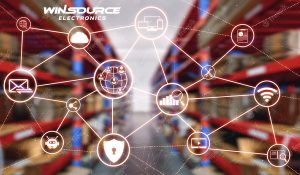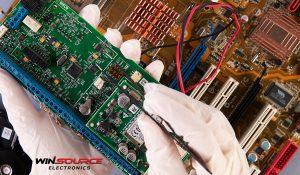How to Build a More Sustainable e-Supply Chain
SOURCE: WinSource Electronics Newsroom
A large semiconductor factory consumes 100 megawatts of power per hour, enough to power 50,000 households, and a single fab can use nine million gallons of water per day. The industry’s catastrophic effect on the environment is easy to comprehend and it’s a situation set only to worsen over time. Whilst it is widely accepted that the time has come for the semiconductor industry to take matters in hand and find ways to be a part of the solution rather than the problem, the question remains how?
In a world facing many challenges, sustainable development must begin immediately for the benefit of future generations.

For a manufacturing facility, focus might be on reducing water, energy consumption and greenhouse gas emissions. A semiconductor packaging producer might prioritise the limiting of harmful content in packaging materials. One of the obvious problems is that equipment manufacturers currently have little incentive to align sustainability goals across their supply chains. What is agreed upon, however, is that across the life cycle of semiconductor chip production, regulatory standards and targets must be implemented to mitigate the negative effects of manufacture.
Meanwhile, there is another approach to achieving sustainability. Production and manufacture can be decoupled from resource extraction. Holistic sustainability emphasises the circularity in the production life cycle, from design through maintenance and repair to reuse, refurbishment and recycling, to reduce inputs waste and environmental impact. Building a truly circular approach, however, will require coordination across the full cycle, from materials through design to disposal. Equally new standards for chip reuse in the secondary market will need to be set, providing further impetus for cross-sectoral collaboration and exchange.
So, against this backdrop, how is WinSource positioned? As the largest distributor of electronic components in Asia, Win Source supports sustainable development with one of its main business areas, revolving around the replacement solution. Win Source not only provides customers with obsolete and commonly used parts, but also provides OEMs with innovative replacement solutions and services to meet their business goals today and in the future.

Furthermore, Win Source demonstrates its commitment to sustainable development through its adherence to a number of high-level standards certifications which, since the company’s establishment in 1999, it has undertaken and passed.
Universally acknowledged standards such as AS9120B (aviation quality certification), ISO13485 (medical device quality certification) and ESDS20 (static protection management) demonstrate Win Source’s insistence on providing customers with the highest standard of products and services.
There are many dangers for customers buying fake or refurbished components. Substandard or faulty components can delay a customer’s entire production chain. Combined with the subsequent waste of resources, the resulting situation does not conform to the concept of sustainable development.
The earnest enthusiasm of Win Source to build a green enterprise is further demonstrated by its standards obtained in relation to environmental management systems. ISO14001 (environmental management certification). ISO14001 defines globally recognised requirements for an environmental management system and includes many other standards in various areas of environmental management, including life cycle assessment, environmental key figures and environmental performance assessment.
As Win Source insists, “Quality is life!” It’s a maxim that, it is hoped, will give assurance as well as elevate its customers’ buying priorities, rather than simply being pleased to find the supplier from Asia with the best price.
For more information go to www.win-source.net











